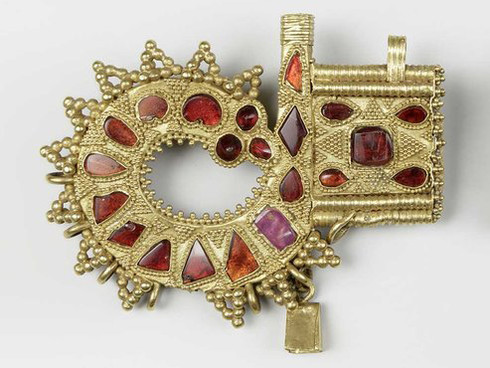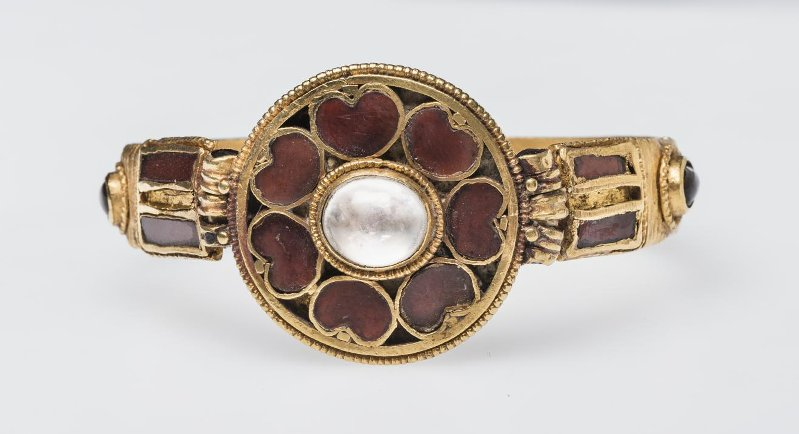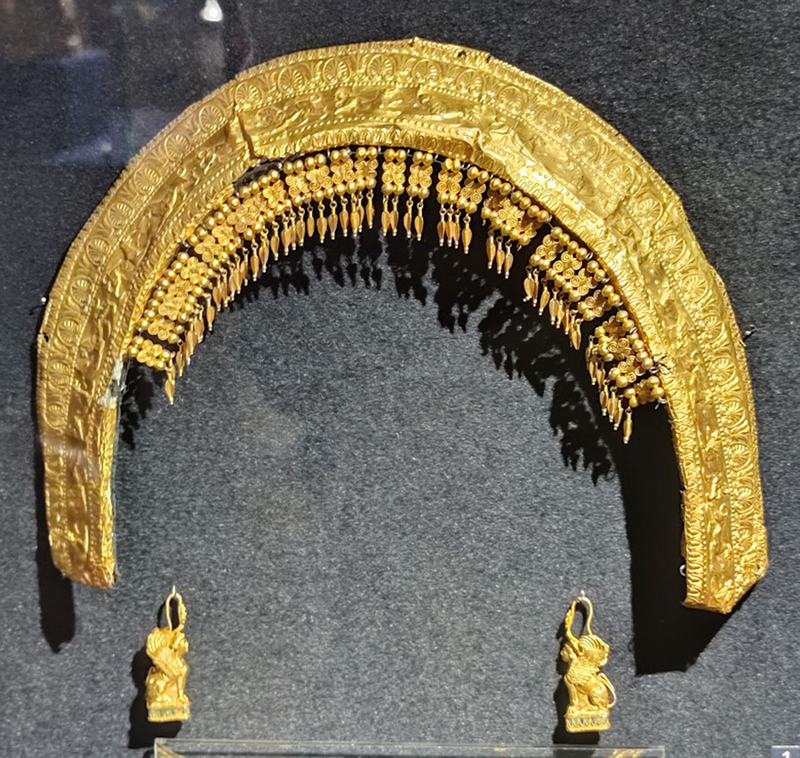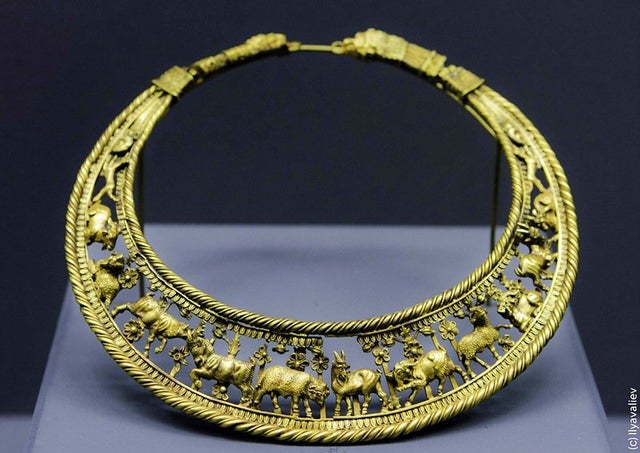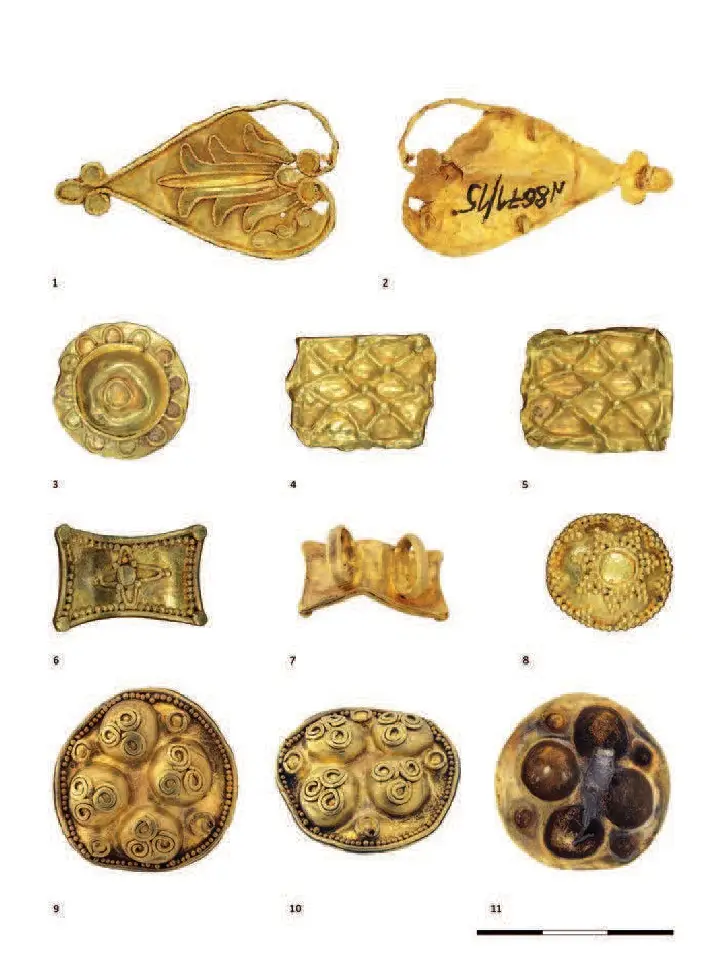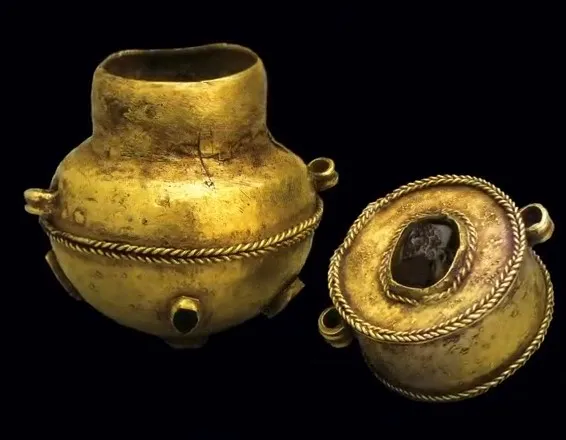



Kurgan Segileevskoe-2
“Digging underneath, they discovered a rectangular chamber lined with broad, flat stones. Inside was something the looters somehow had missed: golden treasures placed there 2,400 years ago.
The chamber contained two bucket-shaped gold vessels, each placed upside down. Inside were three gold cups, a heavy gold finger ring, two neck rings, and a gold bracelet. In all, the well-preserved gold artifacts weighed nearly seven pounds (3.2 kilos)” [source]
“Both vessels from Sengileevskoe-2 are pierced, a common feature of similar artifacts found in graves across the Scythian world, though most other examples are made of bronze and none are as ornately decorated.”



L – a cup with six man in combat and dead on the ground (a Scythian warrior fires an arrow at a foe, while another lies dead and beheaded at his feet. An old man stabbing a younger warrior in the neck.)
R – a cup with griffins attacking a stag.
“The first mystery is what the artifacts might have been used for. Small cup- or bell-shaped vessels with holes in the bottom (or top) are common in Scythian graves. They are often made of bronze and, rarely, of gold or silver. Archaeologists have suggested they functioned as decorative ornaments, originally hung from horses’ bridles. At first, Belinski thought the two large, elaborately decorated artifacts from Sengileevskoe-2, each of which also has a hole, were simply oversized examples of these common horse trappings. But there was something odd about the vessels. When he pulled them out of the ground 2,400 years after they had been buried, he noticed crusty patches of sticky black residue on both. Before cleaning the gold, Belinski asked the crime lab in Stavropol to take samples for analysis. The results came back positive for opium. Looking at the residue under a microscope, experts identified cannabis particles as well. The residue seems to confirm stories told by ancient authors, Herodotus among them, that the Scythians marked important occasions with drug-fueled rituals. “A dish is placed upon the ground, into which they put a number of red-hot stones, and then add some hemp-seed,” the Greek historian writes. “Immediately it smokes, and gives out such a vapor as no Grecian vapor-bath can exceed; the Scyths, delighted, shout for joy.” Hemp seeds and small metal pipes have been found in frozen tombs far to the east, but it was never clear how they were used, and some archaeologists have argued the plants were medicinal. The residue on these gold vessels appears to be evidence of a more meaningful ritual. There’s no sign of charring or burning, so Belinski thinks the opium was consumed as a concentrated drink, perhaps while cannabis was burning nearby. “That both drugs were being used simultaneously is beyond doubt,” he says. (…)
Both Gass and Belinski suggest that the small cups, which are not much bigger than a thimble, were worn or carried the way Christians wear crosses today. If they’re correct, it could help explain ritual practices all across the Scythian world. “These conical objects with holes are known from other assemblages, but interpretation has always been a problem,” says Ivantchik. “We now know the purpose was preparation of opium or a narcotic substance for sacred rites. Cultic connections with such rare substances are very important. That Belinski detected the use of these substances is another proof the objects have cultic character.”
The collection of this very particular type of artifact in this location may also provide a strong clue as to what may have been happening on that hilltop with its majestic view of the valley below in 400 B.C. If the vessels were holy chalices for a powerful narcotic, were the stunning decorations on their outsides packed with meaning as well? Do their motifs, as Belinski and Gass wonder, reveal insights into the Scythian worldview—and perhaps provide even more confirmation of Herodotus’ histories? (…)
Today the gold from the Sengileevskoe-2 kurgan sits in a museum safe in Pyatigorsk.
[farther reading >> an article Rites of the Scythians, by Andrew Curry https://www.archaeology.org]
More pictures of the Sengileevskoe-2 kurgan gold treasure >> [https://www.mk.ru/science/2014/07/06/] [http://oldstory.info]



Gold; chasing, engraving. State Historical Museum Kiev. Greco-Scythian work
Sergei Aleksandrovich Yatsenko http://archaeologyca.su/?p=2886


Helmet from the Ak-Burun mound (4th century BCE) Gold, height 14.4 cm. Found near the city of Kerch in the burial place of a Scythian, Sarmatian or Meotian leader. Made in the workshop of the Bosporan Kingdom, as evidenced by the nine-petalled calla flower. Stored in the State Hermitage Museum. This is probably also a sign of the power of the leader. source >>


- В. Ю. Мурзин О ЗОЛОТЫХ «КОНУСАХ» ИЗ СКИФСКИХ КУРГАНОВ [link]
- А.И. Кубышев, С.С. Бессонова, Н.В. Ковалёв
Братолюбовский курган.
// Киев: ИА НАНУ. 2009. 192 с., 16 с. цв.вкл. ISBN 978-966-02-5522-7 [link] - Декоративні елементи скіфських головних уборів до інтерпретації так званих “великих ворварок”
Любов Клочко [link]

